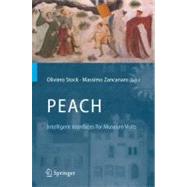
| Intelligent Mobile Guides | |
| Adaptive Multimedia Guide | p. 3 |
| Introduction and Motivation | p. 3 |
| State of the Art | p. 5 |
| History of the System | p. 7 |
| Authoring Guidelines | p. 18 |
| Conclusion | p. 21 |
| Acknowledgments | p. 22 |
| Cinematographic Techniques for Automatic Documentary-like Presentations | p. 23 |
| Introduction | p. 23 |
| Cinematography for Video Documentaries | p. 26 |
| Cinematographic Templates | p. 27 |
| Fully Automatic Documentary Generation | p. 30 |
| Generating Text for Documentary Descriptions | p. 33 |
| Automatic Cinematography | p. 37 |
| Conclusions | p. 43 |
| Detecting Focus of Attention | p. 45 |
| Introduction | p. 45 |
| Mediated Pointing | p. 46 |
| Natural Pointing | p. 61 |
| Conclusions | p. 70 |
| Report Generation for Postvisit Summaries in Museum Environments | p. 71 |
| The Museum Mission | p. 71 |
| Resources Needed for Producing Report Summaries | p. 75 |
| Producing the Text of the Report | p. 78 |
| Personalization | p. 86 |
| Implementation Methodology | p. 89 |
| Infrastructure and User Modelling | |
| Delivering Services in Active Museums via Group Communication | p. 95 |
| Motivations | p. 95 |
| Group Communication in Multiagent Systems | p. 97 |
| Channelled Multicast and LoudVoice | p. 99 |
| Modelling Group Communication | p. 100 |
| Implicit Organizations | p. 102 |
| Designing and Developing Implicit Organizations | p. 109 |
| Conclusions | p. 120 |
| User Modelling and Adaptation for a Museum Visitors' Guide | p. 121 |
| Introduction | p. 121 |
| User Modelling and Adaptation in Museum Visitors' Guides | p. 122 |
| PEACH Challenges | p. 124 |
| PEACH User Models and Adaptation | p. 127 |
| Discussion and Future Work | p. 142 |
| Summary | p. 144 |
| Stationary Devices | |
| Integration of Mobile and Stationary Presentation Devices | p. 147 |
| Introduction | p. 147 |
| Related Work | p. 148 |
| Migrating Virtual Museum Guides | p. 149 |
| Using Virtual Characters to Present Adapted Information in Museum Settings | p. 153 |
| Information Presentation for Mobile and Stationary Devices | p. 162 |
| Summary and Outlook | p. 163 |
| Children in the Museum: an Environment for Collaborative Storytelling | p. 165 |
| Introduction | p. 165 |
| Story Table Design and Implementation | p. 167 |
| Pilot Studies | p. 171 |
| The Experimental Study | p. 176 |
| Conclusion | p. 183 |
| Acknowledgments | p. 184 |
| Virtual Reconstructions and Simulations | |
| Photorealistic 3D Modelling Applied to Cultural Heritage | p. 187 |
| Introduction | p. 187 |
| Image Based Modelling | p. 188 |
| Results Achieved | p. 196 |
| Laser Scanning | p. 200 |
| Tracking Visitors in a Museum | p. 205 |
| Introduction | p. 205 |
| System Architecture Overview | p. 206 |
| Simulated Environments and Visitors | p. 208 |
| Distributed Computing | p. 213 |
| Probabilistic Tracking | p. 215 |
| Conclusions | p. 225 |
| Evaluation and Usability | |
| Evaluation of Cinematic Techniques in a Mobile Multimedia Museum Guide Interface | p. 229 |
| Introduction | p. 229 |
| The Prototype | p. 230 |
| Cinematic Presentations | p. 232 |
| The User Study | p. 235 |
| Conclusion | p. 244 |
| Innovative Approaches for Evaluating Adaptive Mobile Museum Guides | p. 245 |
| Introduction | p. 245 |
| Dimensions of Adaptivity for Mobile Guides | p. 248 |
| Acceptance of Adaptive Systems-An Attitudinal Study | p. 249 |
| Dimensions of Acceptance-Testing the Like-o-Meter | p. 257 |
| Conclusions | p. 264 |
| Future Research | |
| Intelligent Interfaces for Groups in a Museum | p. 269 |
| Introduction | p. 269 |
| Technology for Groups in a Museum | p. 270 |
| Group Modelling | p. 273 |
| Conversations Within Groups | p. 278 |
| Shared Devices for Group Presentations | p. 280 |
| Mobile Guides 2.0 | p. 283 |
| Groups of Children | p. 286 |
| Conclusions | p. 288 |
| References | p. 289 |
| Authors | p. 311 |
| Index | p. 315 |
| Table of Contents provided by Publisher. All Rights Reserved. |
The New copy of this book will include any supplemental materials advertised. Please check the title of the book to determine if it should include any access cards, study guides, lab manuals, CDs, etc.
The Used, Rental and eBook copies of this book are not guaranteed to include any supplemental materials. Typically, only the book itself is included. This is true even if the title states it includes any access cards, study guides, lab manuals, CDs, etc.